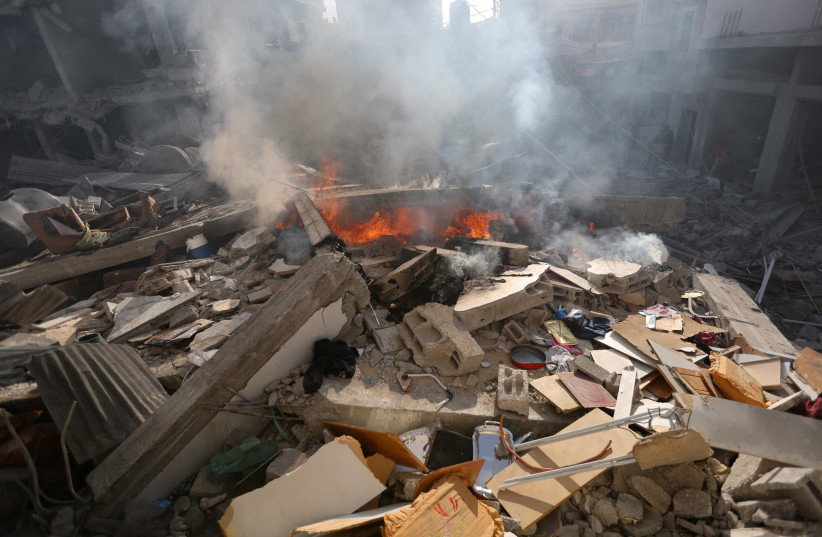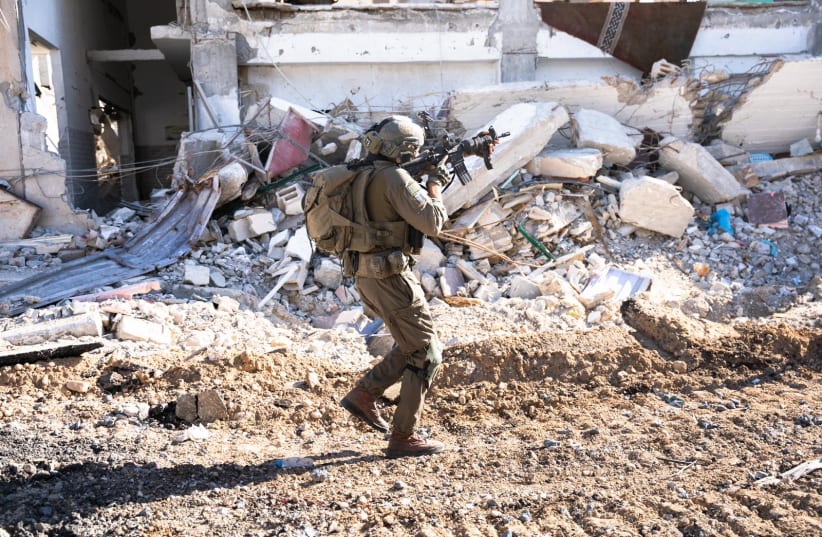As Israel looks toward an operation in Rafah, the battle will be overshadowed by lessons learned from other parts of the Gaza operation over the last five months. The ground maneuver in Gaza began five months ago on October 27, so there is a lot of information that commanders can glean from what they have already seen in the battle against Hamas.
There are essentially three phases of war in Gaza that will provide a backdrop for the Rafah operation. Phase one was the ground maneuver from October 27 to November 24. This was the highest intensity phase of the war, and came in the wake of intense bombing of Gaza in the first weeks following the Hamas massacre of October 7.
This part of the war also received a lot of international attention, with accusations that it was too widespread, led to a lot of destruction, and also caused civilian casualties.
The battle for northern Gaza was led by two large IDF divisions, the 36th and the 162nd. When northern Gaza was mostly taken, 12 Hamas battalions had been defeated. The battles in the north involved tanks and APCs churning up roads and urban fighting in places like Shejaia, Shati, and Jabalya.
Most civilians had been asked to evacuate in October, so there weren’t many civilians in those areas when the tanks went in. The people returned though, in January and February, so that by March some 300,000 people were in northern Gaza and Hamas had returned with them.
The second phase occurred in December and January with the operations in Khan Yunis. The Khan Yunis battle was led by the 98th Division and its legendary commander Brig.-Gen. Dan Goldfus. This was a more focused battle involving more commandos. Civilians were also warned to leave before troops entered and then the troops moved slowly, neighborhood by neighborhood, to try to find tunnels and defeat Hamas. At least four more Hamas battalions were defeated here.


The last phase that provides information for the battle in Rafah is the recent phase, which has seen precision raids into areas such as Shati, Zaytun, and Shifa. These areas were already taken by the IDF in November and December, so it meant returning to clear the areas again.
Some commentators claim that the IDF purposely let Hamas return to these areas to then catch them by surprise later. At Shifa, for instance, around a thousand terrorists returned to the hospital and the IDF raided the place with surprise, without telling people first.
What tactics will be used in Rafah?
Which IDF tactic will be used in Rafah? The 36th Division, which played such a large key role in October and November, was moved to northern Israel in January. It is conducting a training program this week with battalion and brigade commanders. It is focused on the North.
“As part of the program, the commanders delved into professional content and the operational and strategic plans for the northern framework. The program, led by the 36th Division, included professional lectures and learning from the division’s combat lessons in the Gaza Strip, with specific adjustments for the challenges of the northern arena,” the IDF said this week.
The US wants a slow, phased, precision campaign in Rafah. A statement released by the US Department of Defense following a meeting between Defense Secretary Lloyd Austin and Israeli Defense Minister Yoav Gallant said, “regarding Rafah, a significant portion of the meeting focused on Israel’s concept of operations in that city, with [Secretary of Defense Lloyd] Austin expressing that the United States’ goal is to help Israel find an alternative to a full-scale military operation that could potentially endanger the city’s civilian population, according to one senior defense official familiar with the meeting.” The US officials then discussed a plan that involves “sequence and a phasing of activities.”
IT’S NOT always easy to understand the coded language of military speak. “Alternative to full-scale military operation” sound like precision raids by special forces and commandos. “Phasing” and “sequence” sounds like a slow maneuver, moving street by street with lots of time for civilians to move from one area to another, perhaps even moving civilians back and forth as parts of the city are taken.
It’s hard to know if any of this borrows from US experience in backing operations in Raqqa in 2017 or Mosul in 2016, or in battles for Fallujah in 2004 and Ramadi in 2006.
Are there positive lessons to be learned from all those battles? It would appear the levels of destruction in Raqqa and Mosul would not be accepted if Israel were to do the same in Rafah. Things were a bit easier for the Iraqis in Mosul because they had established IDP camps to move people to behind their lines. Israel does not want to do the same. This leaves more complex challenges regarding civilians in Rafah.
The overall issue in Rafah will be timing. The US is sending personnel and ships to build a temporary pier off the coast of Gaza. However, that will not be completed until mid- or late April. Concerns about humanitarian aid entering Gaza will overshadow the operation.
This is because most aid is now being delivered via Rafah, and thus Hamas is allowed to hijack the aid. Around 250 trucks enter Rafah day, with another 30 or so entering northern Gaza. The goal will be to shift this movement of trucks and aid in such a way that it meets the needs of the civilians who will need to be moved during any campaign in Rafah. Even a “phased” campaign would require phases of moving 50,000 civilians and meeting their aid needs.
The last challenge will be to make the Rafah battle worth it. Hamas will want to move out of Rafah as it moved out of northern Gaza, infiltrating the central camps area or other areas of Gaza, so that it can then return to Rafah. Hamas calculates that Israel does not have time on its side and that all Hamas has to do is “persevere” for another few months and it will win and Israel will not accomplish its objectives.
Toward that end, Hamas leader Ismail Haniyeh went to Iran this week and bragged about how Hamas is winning the war. Hamas calculated winning differently than Israel. It “wins” if there is more civilian suffering and if it can maintain its presence.
Israel talks about Hamas “battalions” but Hamas does not mind reducing its battalions and dispersing them into plain-clothes mafia-like groups of men who can control Gaza without needing to carry arms at all times. This is the Hamas model going back to its foundation in the 1980s.
Defeating this will require a lot more than just a phased precision operation going after the operatives that Hamas chooses to leave behind in Rafah.
